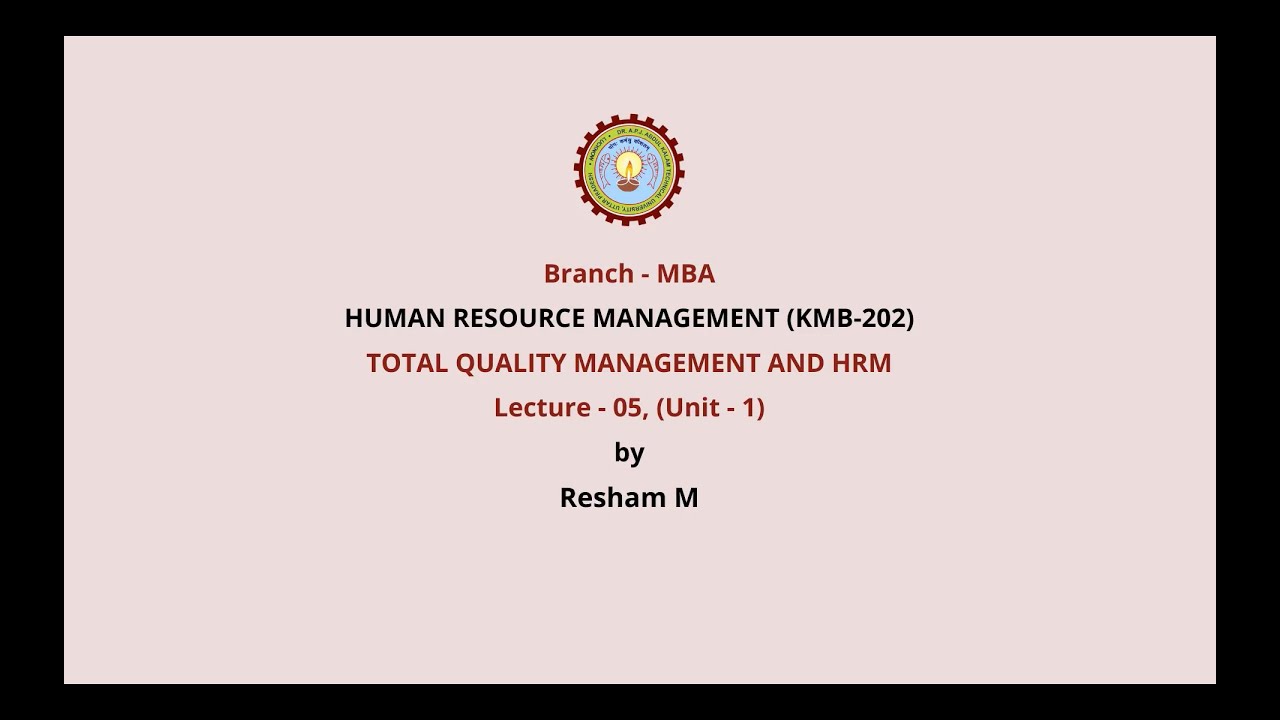2.1 Motivating workers IGCSE Business Studies
Summary
TLDRThis video from the Cents Business YouTube channel delves into employee motivation, exploring why people work and the significance of a motivated workforce. It discusses human needs, key motivational theories such as Taylor's Scientific Management, Maslow's Hierarchy of Needs, and Herzberg's Two-Factor Theory, and outlines financial and non-financial motivators. The video emphasizes the impact of motivation on productivity and provides practical advice for enhancing employee engagement, concluding with an interactive task to apply these concepts.
Takeaways
- 😀 Motivation is crucial for getting employees to work at their full capacity and take pride in their work.
- 💼 People work primarily to earn money to fulfill their basic needs and desires, such as buying a car, house, or clothes.
- 💡 Motivation involves getting someone to do what you want them to do willingly and with pride.
- 💰 Money is often a key motivator, but other factors like social needs, job security, and recognition can also be significant.
- 📈 A well-motivated workforce leads to increased productivity, efficiency, and ultimately higher profits for the company.
- 🛠️ The piece rate system, introduced by Taylor, suggests that workers are motivated by personal gains, primarily money, but this theory has limitations in modern workplaces.
- 🌟 Maslow's hierarchy of needs suggests that employees are motivated by fulfilling each level of needs, from basic physiological needs to self-actualization.
- 🔄 Herzberg's two-factor theory distinguishes between hygiene factors, which can demotivate if unsatisfied, and motivators, which truly inspire workers to perform better.
- 💵 Financial motivators include wages, commissions, bonuses, profit sharing, and stock options, which can significantly impact employee motivation.
- 🏆 Non-financial motivators like job satisfaction, opportunities for promotion, team involvement, and recognition can also be powerful in driving employee engagement.
- 📝 The video script concludes with an activity encouraging viewers to apply motivational theories to recommend methods for motivating their class.
Q & A
What is the primary reason people work according to the video?
-People work primarily to earn money and fulfill their basic necessities, such as buying a car, house, clothes, or going on holidays.
What does the term 'motivation' mean in the context of the video?
-Motivation in this context refers to the process of getting someone to do what you want them to do willingly and with pride, working to their full capacity and getting the best out of them.
What are the benefits of having a well-motivated workforce as discussed in the video?
-A well-motivated workforce leads to increased productivity and efficiency, higher profits, job satisfaction, stability, and reduced absenteeism and turnover.
What is the significance of Maslow's hierarchy of needs in employee motivation?
-Maslow's hierarchy of needs is significant as it shows that employees are motivated by fulfilling each level of needs, starting from basic physiological needs to self-actualization, allowing managers to identify and address their workers' needs accordingly.
How does the piece rate system, introduced by Taylor, motivate workers?
-The piece rate system motivates workers by paying them based on the quantity of output they produce, thus encouraging them to produce more to earn more money.
What are the limitations of Taylor's piece rate system as a motivational tool?
-The limitations include the fact that it may not be practical in jobs where output cannot be measured, like service industries, and it does not guarantee high-quality output.
What is Herzberg's two-factor theory and how does it relate to motivation?
-Herzberg's two-factor theory distinguishes between hygiene factors, which can lead to dissatisfaction if not met, and motivators, which can truly motivate workers to perform better. It suggests focusing on motivators for maximum employee motivation.
What are some financial motivators discussed in the video?
-Financial motivators include wages, piece rates, commissions, bonuses, profit sharing, and shared ownership, which can incentivize employees through direct financial benefits.
Can you provide examples of non-financial motivators mentioned in the video?
-Non-financial motivators include job satisfaction, promotion opportunities, team involvement, recognition, job rotation, job enlargement, job enrichment, and team working.
How can companies ensure job satisfaction for their workers beyond the motivators mentioned?
-Companies can ensure job satisfaction by understanding individual employee needs, providing a supportive work environment, offering opportunities for growth and development, and fostering a sense of belonging and recognition.
What activity does the video suggest for viewers to enhance their understanding of motivation theories?
-The video suggests that viewers should answer three questions: recommending an appropriate method of motivation for their class, explaining what motivates them, and relating their suggestions to the motivation theories discussed in the video.
Outlines

Esta sección está disponible solo para usuarios con suscripción. Por favor, mejora tu plan para acceder a esta parte.
Mejorar ahoraMindmap

Esta sección está disponible solo para usuarios con suscripción. Por favor, mejora tu plan para acceder a esta parte.
Mejorar ahoraKeywords

Esta sección está disponible solo para usuarios con suscripción. Por favor, mejora tu plan para acceder a esta parte.
Mejorar ahoraHighlights

Esta sección está disponible solo para usuarios con suscripción. Por favor, mejora tu plan para acceder a esta parte.
Mejorar ahoraTranscripts

Esta sección está disponible solo para usuarios con suscripción. Por favor, mejora tu plan para acceder a esta parte.
Mejorar ahoraVer Más Videos Relacionados

1.5 Business Objectives and Stakeholder Objectives IGCSE business studies

Human Resource Management | Total Quality Management and HRM | AKTU Digital Education

How Google Keeps Its Employees Engaged and Motivated (The Secret Sauce)?

Greg Goldberg; The Office Equipment Industry in Transition

1.2 Classification of businesses IGCSE Business Studies

Talent 4.0 - How to motivate your employees?
5.0 / 5 (0 votes)
